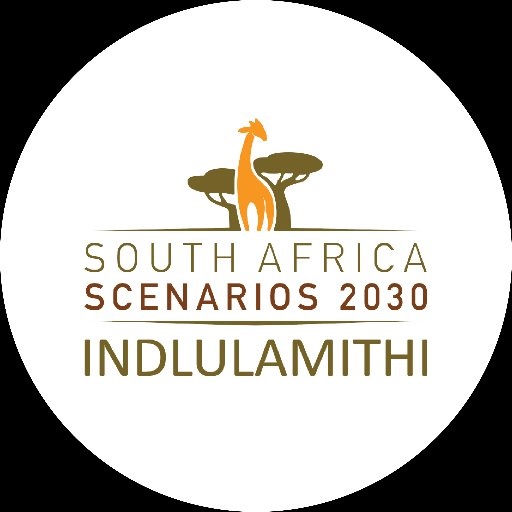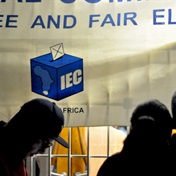
With persistent unemployment and an unstable economy, it is important for South Africans to actively build a future they desire and strive to achieve by 2030.
The importance of making sound economic policy choices and constantly tracking the status of the country gives citizens the valuable opportunity to make informed decisions that steer the country towards a future it desires.
South Africa is a country that is developing; it has just reached 25 years of democracy and, though it has made strides, it is being crippled by crime, unemployment and a lack of a common goal.
As it navigates the intricacies of a new democracy, we see groups of people uniting under the banner of creating solidarity while other groups are embroiled in political, racial and cultural conflict.
To keep track of where the country is going and assist not only leaders but all citizens to make an informed decision about their national health, Indlulamithi SA Scenarios 2030, with Social Surveys Africa, developed a social cohesion barometer – the Indlulamithi Barometer.
The barometer, launched in June last year, examines both hard trends and perceptions – or how citizens feel – to provide South Africans with either a sense of hope or an early warning of what might come in the year 2030.
The results are released annually, telling us towards which Indlulamithi scenario South Africa is trending.
National trends and perceptions influence South Africa’s future and level of social cohesion.
The trends and perceptions examined by the barometer for the period 2018/19 showed that the country was trending (mostly, but not completely) towards the Gwara Gwara scenario – a nation torn between immobility and restless political, economic and social energy, during which social cohesion is at its lowest.
“In the Indlulamithi scenarios, the Gwara Gwara is brought on by weakened state capacity to deal with social ills. South Africa enters a vortex of low growth and high crime; any sense of solidarity and equality among fellow South Africans burns out, with xenophobia and South Africa’s low-level gender civil war deepening; and women becoming more empowered and yet more targeted.”
Read: The road ahead: Social cohesion for a secure future
The Indlulamithi Barometer results are influenced by social, economic and political trends, such as the state capture revelations, continued divisions within all the major political parties and sharp increases in the cost of living, partly due to the effect of last year’s VAT increase and higher petrol prices, among others.
On the other hand, the widespread trust in President Cyril Ramaphosa, solidarity in supporting Caster Semenya when she was discriminated against by the International Association of Athletics Federations, and gender equality when Banyana Banyana were granted pay equal to Bafana Bafana’s influenced South Africans to feel that the country had a future balanced with good and bad.
Interestingly, these perceptions influenced the barometer reading to not completely land on the Gwara Gwara, however, social inequality, unemployment and poverty in the country made the final Indlulamithi Barometer reading so strong that it becomes the overall dominant and most likely scenario.
Ultimately, this demonstrated how inextricably South Africa’s political and economic stability and progression are linked to its levels of social cohesion and, if there is any hope of navigating out of Gwara Gwara, developing a national identity and common vision for the future has to take priority.
Purpose of the barometer
The barometer has two main components: storytelling and data-driven components.
The storytelling component looks at perceptions, or how citizens feel, about the country.
This includes an analysis of high-profile media stories throughout the year and online survey data from 30 experienced thought leaders, and over 160 young South Africans.
These participants are asked to identify key events over the year in review, which influenced their sense of confidence or despondence in the country.
The data-driven component looks beyond these daily news cycles at longer-term trends around leadership, equality, education and crime.
Information is compiled and analysed against 52 carefully selected indicators, of which 42 are quantitative measures based on existing data (GDP growth), and 10 are qualitative measures (such as the level of political party factionalism).
These two components are then brought together to produce a barometer reading.
The barometer is shown as both a one-dimensional (aggregate) and a three-dimensional (by Key Driving Force) distribution. This is to show the dimensions do not necessarily have the same distribution across scenarios.
Looking at the news headlines over the past three months, we saw unemployment rates hitting an all-time high, feelings of inequality violently expressed through what many deemed xenophobic attacks, serious protests against gender-based violence dominating the streets and foreign nationals fleeing the country in an attempt to feel safe.
On a positive note, we also saw the Worldwide Press Freedom Index ranking South African media 31st out of 180 countries, up six places from last year, and its citizens in solidarity against gender-based violence.
By looking at these occurrences alone, and if our future depended on them, what would you say the future of social cohesion in the country is looking like?
And to further implore on the psyche of the country, would we say that, by the year 2030, South Africa will be a socially cohesive country to stay in?
While the tool has offered invaluable insights so far, it is still very much a work in progress.
The barometer is designed to be flexible and allow for new or revised indicators to be added, without invalidating previous findings from year to year.
The barometer will produce updated readings every year on July 21, providing ongoing insights into how the country is progressing.
It will help us to look beyond the ups and downs of the daily news cycle, and rather understand the longer-term trends around leadership, equality, education and crime that shape our future.
With these insights, governments, business leaders and citizens will be empowered to make more well-considered, far-sighted decisions – decisions that look above the trees and into the future.
Ngwato is director of Social Surveys Africa
 | ||||||||||||||||||||||||||
Get in touchCity Press | ||||||||||||||||||||||||||
| ||||||||||||||||||||||||||
| Rise above the clutter | Choose your news | City Press in your inbox | ||||||||||||||||||||||||||
| City Press is an agenda-setting South African news brand that publishes across platforms. Its flagship print edition is distributed on a Sunday. |




 Publications
Publications
 Partners
Partners








